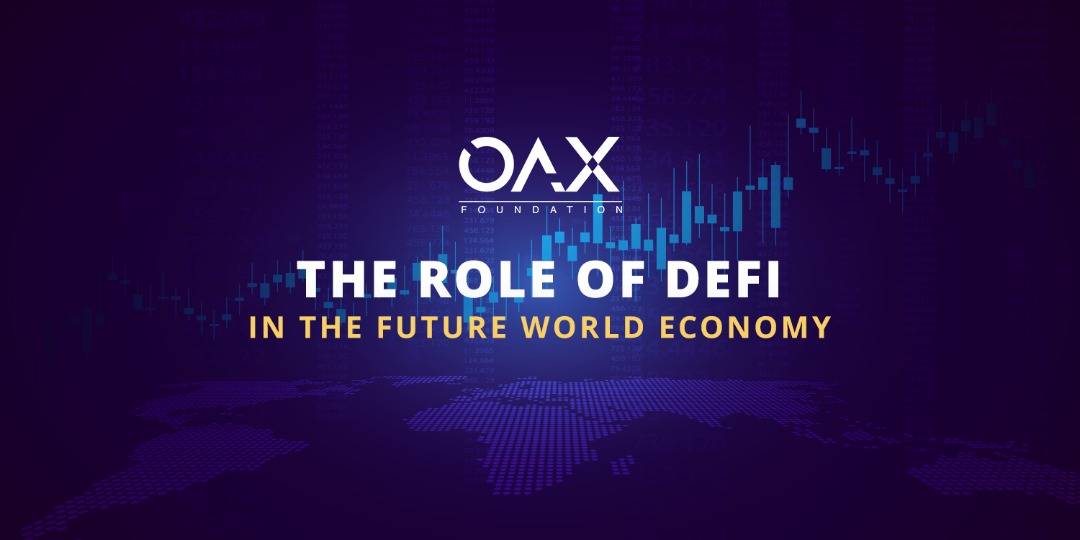
The Role of DeFi in the Future World Economy
Ever since the full extent of the COVID-19 pandemic drove governments to enact unprecedented measures, financial markets have experienced a period of uncertainty and volatility unmatched since the Global Financial Crisis that began in 2008. Now, as governments tentatively examine the possibility of raising some restrictions, it’s possible to look ahead and see what financial markets may look like in a post-COVID-19 economy.
As firm believers in the benefits that DeFi can bring to the global economy, we at OAX Foundation are optimistic that significant opportunities exist for it to help assist in the recovery. But there are of course many challenges that need to be overcome first, not least the scale of the economic problem facing the world.
It’s clear that GDP growth across the world will shrink to an extent never seen before: US GDP is predicted to drop as much as 34% in the second quarter, according to Goldman Sachs. The Asian Development Bank calculates that the global economic shock could be between $2 trillion–$4.1 trillion – equal to between 2.3% and 4.8% of global GDP, depending on the duration and depth of the pandemic.
The other significant legacy of this period is the massive amounts of money created by governments to support businesses and individuals and their respective asset-buying programmes. Combined, these scenarios look set to reproduce several conditions that followed the 2008 crisis.
From the consumer’s perspective, the impact of these huge numbers isn’t yet clear. But if the post-2008 environment is any indicator, interest rates are likely to remain low, meaning banks have less incentive to lend. And since higher loan default rates drive increased risk aversion, they will also be reluctant to lend. An alternative source of credit might be welcomed by consumers looking to borrow.
With the core business of lending looking riskier and less profitable, greater efficiencies and higher-return activities could prove attractive. DeFi lending is known to provide a higher return than in conventional markets – could a long-term low-interest-rate market lure banks and institutions into testing the crypto lending space?
As we know, the trustless nature of many blockchain financial platforms promotes greater efficiencies in situations where collateral deposits are required – again, suggesting attractive options for collateral-based business models as the recovery progresses. Projects currently under way to develop ways of expanding the range of cryptoassets accepted as security for lending may find they are launching into a receptive environment.
What does this all mean for DeFi? There are still numerous unknowns in a situation that continues to develop: we don’t know how long economic lockdown will persist. Market participants are also watching governments to gauge their appetite for continuing stimulus measures. Indications are that the return to normality will be incremental, giving developers the opportunity to respond as the situation unfolds.
The advantages of DeFi are clear: transparency, automation, cost efficiency and trustlessness. But if it’s to fully respond to users’ needs in the post-COVID world, DeFi needs to continue to gain scale toward a more universally-accessible proposition for consumers – and increased scale will bring with it greater liquidity, lower costs and more efficiencies. Similarly, measures to increase interoperability will find enthusiastic support: the more flexible collateral arrangements can be, the more trading and lending strategies can succeed.
The major driver behind the development of blockchain technology was the chaos that followed the 2008 crisis; in a period of similar conditions, the opportunity will exist to accelerate the development of blockchain-based tools and services for an increasingly receptive marketplace. We may not be looking at a return to the previous landscape, but a step toward one transformed to the advantage of consumers and institutions alike.


